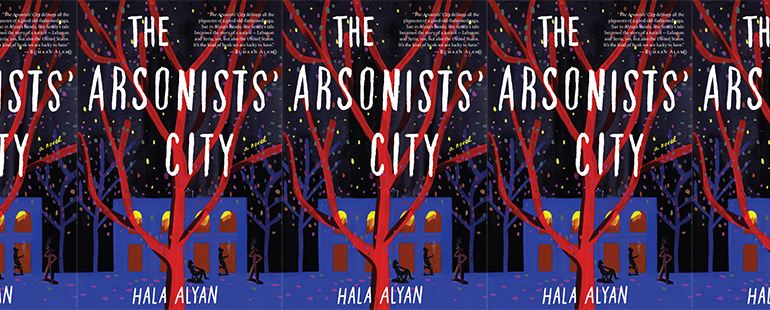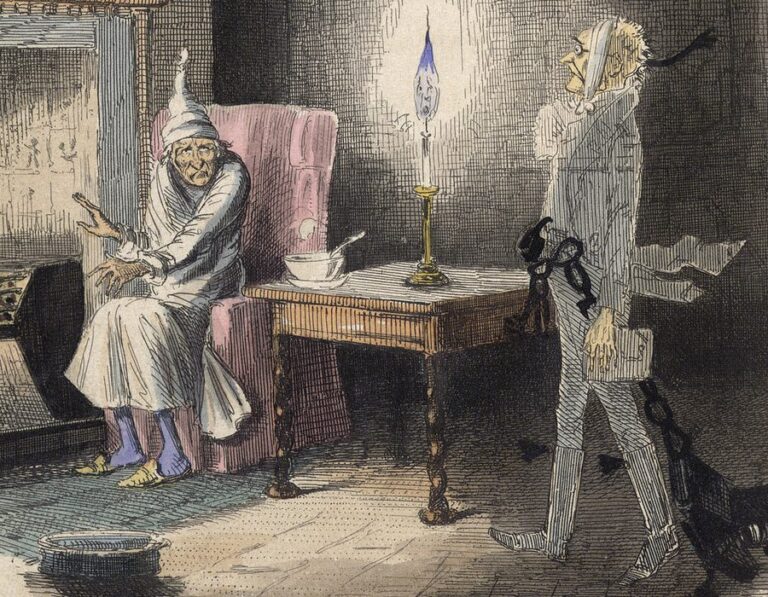A Family of Strangers in The Arsonists’ City

The sheer scope of Hala Alyan’s novel, The Arsonists’ City, published in March, is astounding. With seemingly effortless confidence, Alyan hops back and forth between decades and continents, investigating the social, political, and gender-based tensions experienced in California, New York, Beirut, and Damascus. Alyan honestly and genuinely examines the complex forces at play in each place’s culture while also fully acknowledging how confusing, equivocal, and unknowable they can be.
The basic plot of the novel is simple: Mazna and Idris, two Middle Eastern immigrants who have lived in California for forty years, return with their three adult children, Ava, Mimi, and Najla—who all live in different places—to Idris’s childhood home in Beirut, where they plan to throw a belated memorial to the family patriarch and sell the house. The main tension seems to be Idris’s pigheaded insistence that the house be sold—his children (and even his wife, who has always claimed to hate the house and the city) protest. But behind this straightforward family disagreement lies all the complications, subtleties, and dishonesties upon which families are founded, along with the fears, longings, and displacement more particular to immigrant households.
This territory is rich and Alyan mines it thoroughly and adeptly. Present are many familiar, though skillfully portrayed, elements of family, and immigrant, life: the fibs, the manipulations, the guilt; the constant bickering of the parents; the mother harboring a secret for decades, feeding her scruples and resentment; the youngest daughter who had returned to live in Beirut and feels possessive of both her family’s roots and real estate; the failed musician brother who envies his younger sister’s success; the eldest daughter who has always felt separate from the rest of the family but does not know why. As the book moves back and forth in time, each section written from a different character’s point of view, the family members excavate their own souls as well as those of their loved ones, unearthing bits and pieces of untold truths: premarital and extramarital affairs, a traumatic assault, a sabotaged career opportunity, a rejected offer for an artistic collaboration, and more. Above all these narrative facets, however, hovers the unanswerable question of where each character truly belongs. In the family portrait that emerges, the clearest parts are the blurs. This is a family made up of people who, throughout years of stumbling attempts at intimacy, insist on remaining strangers to one another, protecting a false sense of safety by keeping their most central desires and hurts under wraps and, as a result, concealing information that might make their loved ones feel more seen and less alone.
As the pieces of the puzzle come together in the novel, though resisting the pull of a coherent image in favor of a more complex, ambiguous, and real one, the familial experience of estrangement is revealed to be an underlying theme of immigration and exile. Young Mazna was a Syrian sneaking off to a war-torn Beirut on weekends; Mazna and Idris are Arab immigrants to the United States. Their children have dark skin and a last name that makes Americans pause. Mimi and Ava’s partners both come from white, Christian families that are accepting of them in a stilted, old-fashioned way. When the family returns to Beirut, they are the fake, Americanized Arabs who make grammatical errors when speaking and balk at the modernization of the region’s establishments. And then there are the more complex estrangements that occur over time. Though she starts out as an Other in Beirut and California, Mazna ends up feeling least at home in Damascus. Najla seems to be clinging to her Lebanese heritage beyond the point of authenticity. Ava is drawn to the comforts of a yuppie Brooklyn existence yet stands out in her Mom groups, feeling bored and out of place. Mimi is a stranger in his own life, fighting between conflicting urges to cherish his relationship and career and the desire to burn it all down for a one-night stand.
Combating this estrangement is crucial, but the task is nearly impossible to perform alone. Misery loves company, and so in spite of their caginess, the characters seek others to hold onto, looking for a way to fit into their desired worlds. As Mazna muses toward the end of the book, most of them find someone of lower social and financial standing to use for this purpose: “she understands how people can use you. How the wanting can empty you out.” Idris uses Mazna’s poverty and intense desire for fame to lure her into a marriage after she falls for the poorer and disenfranchised Zakaria, whose low status serves as a romantic backdrop for her desire. Later, she is used by a film director who recognizes her intense artistic passions. Najla pushes the boundaries of her secret Syrian lover, urging her to come out of the closet and ignoring the life-threatening dangers that her paramour’s traditional family poses. Ava and Mimi are used by their white partners’ families as a way to make them feel more liberal and open-minded; in turn, they use these families themselves, seeing in them entry points into a society of plenty. The entire family uses Merry, the deceased grandfather’s live-in immigrant housekeeper, both as an excuse to keep the house in the family, and as a caretaker for them all, only occasionally acknowledging the ways in which their own inherent privilege sets them at an advantage to her. Similar is the story of Zakaria, Idris’s Palestinian childhood friend, who grew up in a refugee camp and whose mother was Idris’s parents’ housekeeper. Though he spent a large portion of his life in Idris’s home, his otherness—the poverty, the grief, the working-class status, the possibility of violence at every turn—made it so he could never really relax into a sense of belonging when among the family. Being Palestinian, he lacks what the other characters possess: someplace, however fractured or torn, to return to. It is not too surprising that when he and his friends make a fatal mistake, he is the one who must pay for it with his life, his death acting as the book’s opening strike.
The characters’ greatest aspiration and greatest sin is assimilation. It is the key to feeling at home as well as the path to losing one’s connection to home. It is therefore the most sought-after goal, as well as the most reviled one. Assimilating makes life easier moment to moment, but deprives one of their bonds to one’s history and family.
As willing immigrants, ex-pats without a viable alternative, or refugees living in exile, the characters are all familiar with the guilt that assimilation carries. In many cultures around the world, the act of moving away from one’s family is often accompanied by pangs of conscience and a sense of abandoning others (or a part of one’s own identity). This is an incurable condition, but the tonic that comes most naturally to its sufferers is remembrance and commemoration—cooking familiar foods, telling and retelling family lore, insisting on maintaining a grasp of one’s native tongue and passing it on to children born into the new country. But as beautiful as this transported heritage is, the price for remembering is the absence of forgetting, and in The Arsonists’ City, refusing to forget one’s past means holding on to grudges, becoming stilted by bygone injustices, and growing attached to narratives one has held onto for too long. Acknowledging one’s roots is necessary to feel at home in the world. But in order to feel at home in one’s chosen country, one must employ a certain measure of oblivion—and that is the greatest journey Alyan’s characters embark upon. To complete the cycle of exile, they must choose to forget some of their ties to their previous existence, let go of Beirut, and move on.


